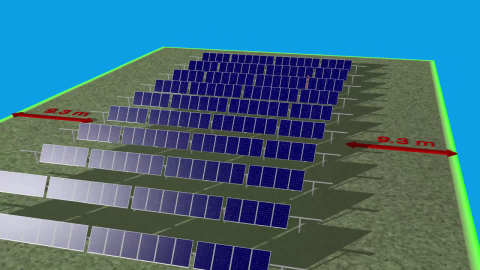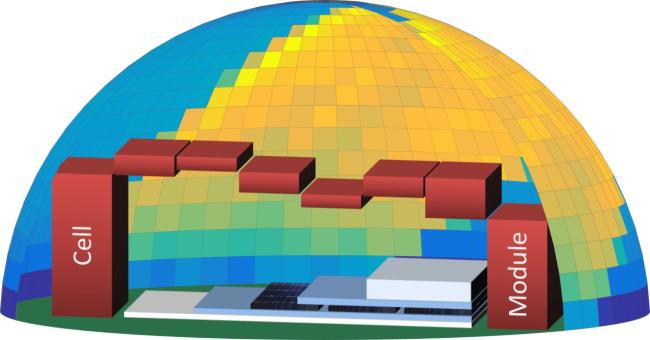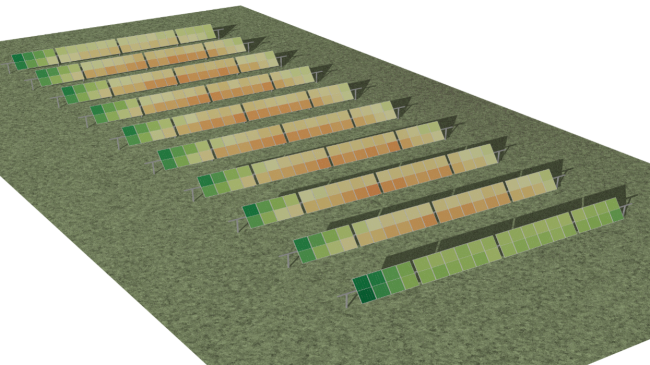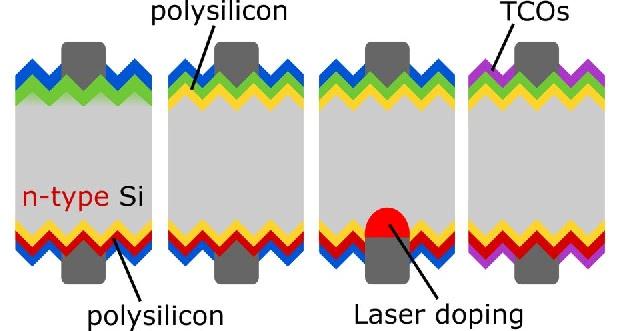
Welcome to the Solar Module and Systems Research Area! Our primary focus is on sophisticated modeling techniques to comprehensively optimize photovoltaic modules and systems, right down to the individual solar cell level. A key area of focus in our research is the performance evaluation of bifacial systems using cutting-edge ray tracing methods. By leveraging these sophisticated modeling approaches, we strive to enhance the overall efficiency and performance of solar modules and systems across diverse environmental conditions. In addition to our modeling endeavors, we conduct rigorous and extensive outdoor testing and monitoring of both mono- and bifacial modules, providing invaluable insights into their real-world capabilities. Join us as we lead the way in pioneering solar module research, driving sustainable energy solutions for a cleaner future.
Device to Module Modelling
Solar cells and solar modules are usually optimized independently under standard test conditions (STC). The performance of solar modules under outdoor conditions, however, depend on module design and environmental conditions.
We have developed a holistic approach to predict the annual yield of solar modules for varying module configurations and environments and quantify 12 effects that affect the annual module performance, starting with solar cells in air under STC to a complete module under realistic conditions. We consider the interaction of optical, thermal and electrical effects in the module and combine it with an angular, spectral and time resolved light source.

Ray tracing of (bifacial) systems
Our research on ray tracing is at the forefront of advancing solar module technology and performance evaluation. Ray tracing is a powerful computational technique that allows us to simulate the behavior of light rays as they interact with photovoltaic systems. By tracing the paths of individual rays of light, we can gain precise insights into how sunlight is absorbed, reflected, and converted into electricity within solar modules.
One of the primary areas of our ray tracing research is the analysis of bifacial solar modules. These modules have the unique ability to capture sunlight from both sides, harnessing energy not only from direct sunlight but also from reflected light on the rear surface. Through sophisticated ray tracing simulations, we can evaluate the bifacial illumination of full photovoltaic systems, considering factors such as ground reflections and surrounding shading. By understanding how light interacts with the system, we can optimize the design and orientation of bifacial modules to maximize their energy yield.
In addition to bifacial modules, our ray tracing research delves into the impact of various environmental conditions on solar module performance. We analyze how factors such as different angles of incident light, varying temperatures, and lower levels of irradiance influence module efficiency. By gaining a comprehensive understanding of these effects, we can design solar modules that are better suited to real-world conditions and maximize energy production throughout the year.
Overall, our research on ray tracing plays a pivotal role in driving the development of high-efficiency solar modules and systems. By harnessing the power of computational modeling, we are paving the way for more sustainable and effective solar energy solutions, contributing to a cleaner and greener future.

Simulation & Modelling
Simulation and modelling tools are crucial for gaining a deeper understanding of measurement results and quantitatively assessing structure-property relationships to facilitate the development of high-performance solar devices. For instance, to optimize high-efficiency devices, modeling is necessary to analyze individual losses at each component and layer of a solar cell based on standard optical and electrical measurements. The primary objective of this research area is to develop advanced simulation and modelling tools that support the development of high-efficiency, durable solar cells. These tools are essential for understanding the complexities of solar cell and module structures and their behavior under field conditions.
